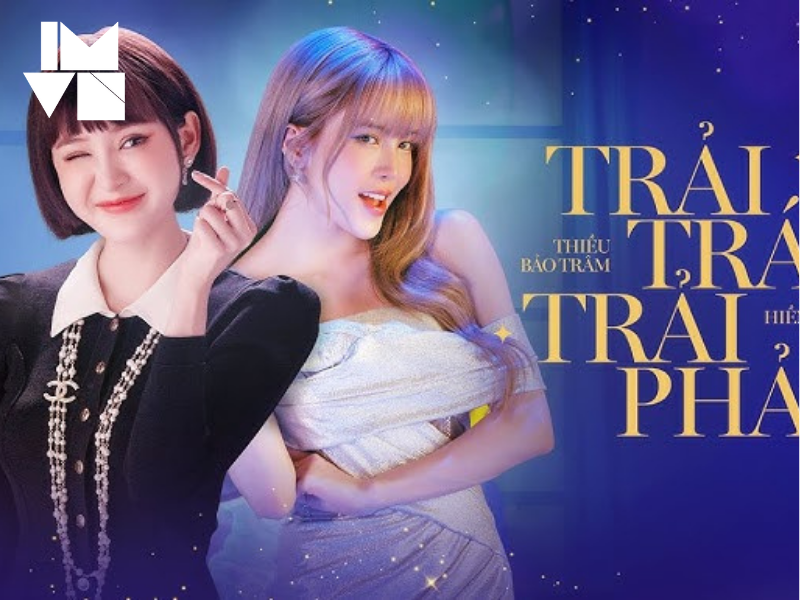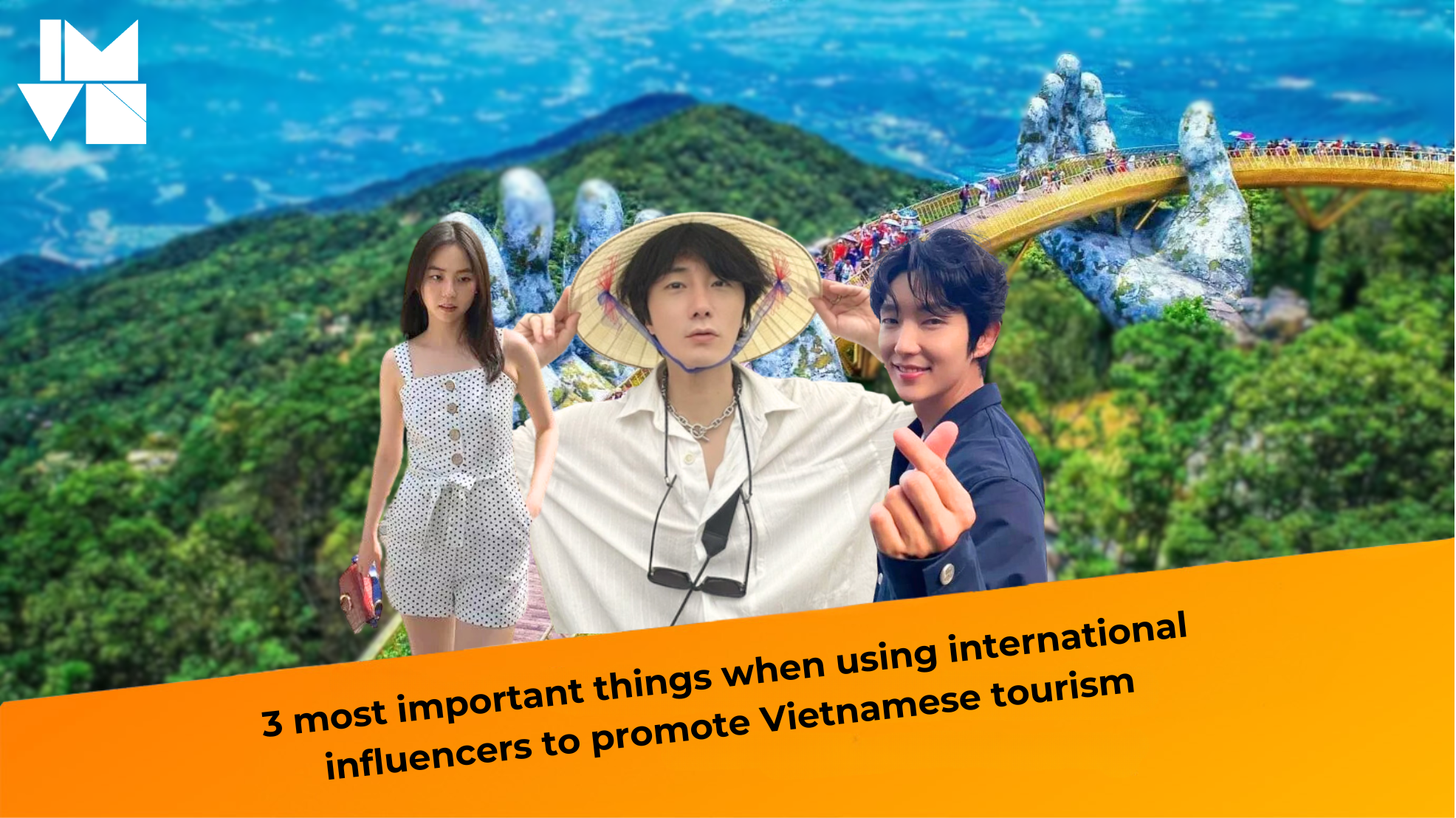At a time when traditional forms of advertising are no longer very attractive to viewers, many brands have chosen a new “turn”: inviting famous singers to act in TV commercials or indirectly advertising by integrating products into the singer’s MV.
Is music video advertising effective?
Looking back at the hot MVs of recent times, it is easy to see that most of the MVs have advertisements embedded, from “hidden” to obvious. Typically, Den Vau and JustaTee advertise for Honda in the MV “Di ve nha”, Son Tung MTP advertises phone, shoe, and car products in the MV “Chung ta cua hien tai”. Most recently, the two girls Hien Ho and Thieu Bao Tram just released a MV called “Trai la tran phai” that made readers “tongue-tied”. It was thought that this would be a breakthrough music product when Hien Ho and Thieu Bao Tram “combine swords” but it turned out that this was an advertisement MV for VIB credit card.

There are opinions that agree and those that oppose the commercialization of music videos, but it cannot be denied that advertising in music videos is really effective, bringing great impact, helping brands spread product images and increase sales. Although the MV Trai trai trai phai by Hien Ho and Thieu Bao Tram was criticized by many audiences, it has received more than 1.2 million views after only 1 day of release. A previous classic case showing the success of integrating products into music videos is the combination of Biti’s Hunter with two singers: Son Tung MTP and Soobin Hoang Son. The brief appearance of Biti’s Hunter in the MV Lac Troi and Di de tro ve helped Biti’s Hunter’s sales increase 3 times, the shoes sold out in 1 week.

Music has an inherent power to influence listeners’ emotions and memories, enabling brands to etch a deeper impression in the audience’s subconscious. Music and idol singers also help to “soften” the advertising experience.
The biggest problem with advertising is… well, advertising itself. What do you do when your favorite show is interrupted by commercials? Many people would immediately switch channels to avoid watching them.
But what about a music video (MV) with a catchy tune, captivating visuals, an engaging story interwoven with subtle advertising? It’s less likely to bother people as much as traditional advertising does. This is where the Vietnam MV Market comes into play.
In Vietnam, music videos have become a powerful marketing tool. Brands are increasingly collaborating with popular artists to create engaging MVs that seamlessly integrate their products or messages. This strategy allows them to reach a wider audience, particularly the youth demographic, who are often avid consumers of music and entertainment content.
Advertising in music videos will be more effective if the singer’s large fan base is the target audience that the brand is targeting. Fans will be willing to view their idols, share the MV, and the MV content will unconsciously influence the fans’ consumption behavior.
If the MV content is interesting, has unexpected situations or funny lines, the possibility of the MV creating a trend is very high and the possibility of the brand being known by many people will be even greater.
Finding the balance between commerce and art
Recently released MVs, almost all MVs have advertisements embedded. If a few years ago MVs only had “light” advertisements, now many music MVs are not afraid of blatant advertisements. There are even many TVCs labeled as music MVs, the message the brand wants to convey is written first, the song and MV content are ordered to be written later to best convey the desired brand message. The story of singers releasing MVs that are purely music products is gradually becoming rare. Are audiences “overfed” when today’s music MVs are no different from TVCs?
Some fastidious audiences may say that advertising in MVs is an act of “disrespecting the audience” and “commercializing art”. But before making such a harsh conclusion, let’s look at how singers in the past released MVs. Singers in the past would run shows hard to earn money, pooling together expenses to release MVs to maintain their popularity. Singers would have to weigh the MVs they wanted to make and the MVs they had enough money to make. To invest in quality MVs, many singers even had to sell their houses and cars even though they knew for sure that making MVs would be a loss. Only naive audiences would believe that artists would flourish and be more creative while struggling to deal with financial matters.
Many artists share that collaborating with brands when releasing MVs helps them reduce financial burdens, allowing them to invest in more spectacular and well-prepared MV images. In an interview, Musician Tien Cookie once said that as a producer, she used to produce a series of MVs without advertisements, but by 2017 she felt exhausted and could no longer continue that way. Each MV costs hundreds of millions, even billions of VND, artists have to pay for it themselves but get almost nothing in return. It is unfair to impose the idea that artists “look down on the audience” just because they put advertisements in MVs. Tien Cookie believes that advertising in MVs is not a problem as long as the advertising is subtle and not too much.

We asked some young people at random whether music videos should include ads. Their responses were pretty consistent: “It’s not about whether there are ads, but how they’re done. Are they subtle or jarring?”
Hoàng Nam, from Ho Chi Minh City, said: “I think all singers need to make a living. As the rapper Đen Vâu put it, ‘This song has been advertised. How can you make music without money?
I will still support my idol, as long as the advertisement is just a side dish, not the main dish in the MV. To do this, the singer and the brand must find a common voice, the brand should not interfere too deeply and appear densely in the MV, because the line between subtlety and offensiveness is very fragile.
Finding the balance between commerce and art is the key to getting the best of both worlds, ensuring benefits for the singer, the brand, and the MV viewers.





